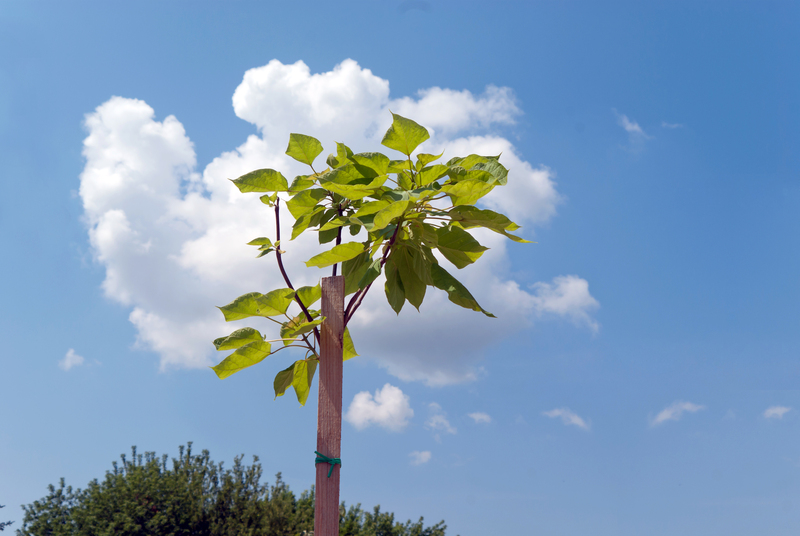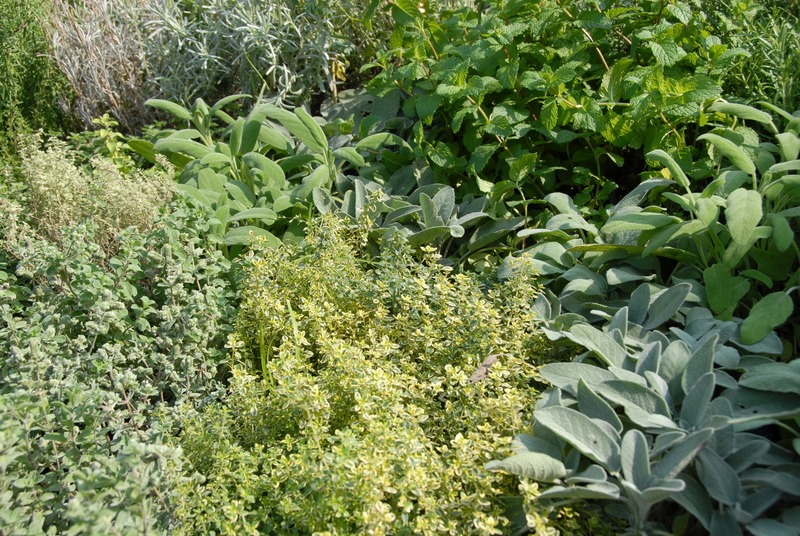Innovative Ideas for a Child-Centric Garden
Posted on 08/09/2025
Innovative Ideas for a Child-Centric Garden
Creating a garden that is tailored for children transforms outdoor spaces into havens for growth, imagination, and learning. When we design child-centric gardens, we foster curiosity, adventure, and joy--cultivating not just plants but childhood memories. In this article, we share innovative garden ideas that put children at the heart of your leafy sanctuary, with a focus on safety, education, and fun!

Why Establish a Child-Friendly Garden?
A garden for kids does more than offer a space to play. It introduces children to the wonders of the natural world, teaches responsibility, encourages healthy eating through homegrown food, and supports their physical, mental, and emotional development. By incorporating child-centric features, you ensure that your outdoor space becomes an enriching extension of the home.
Benefits of a Child-Centered Garden
- Educational Opportunity: Children learn about biology, ecology, and the seasons first-hand.
- Physical Activity: Digging, planting, and harvesting keep kids active and healthy.
- Creativity and Sensory Exploration: A garden invites imaginative play and engages all the senses.
- Emotional Wellbeing: Nature has been shown to improve mood, reduce stress, and boost resilience in children.
- Family Bonding: Gardening together cultivates teamwork and cherished memories.
Planning Your Child-Centric Garden: Key Considerations
Before delving into creative garden ideas for children, take time for careful planning. Safety should be the top priority while crafting a landscape geared towards young explorers. Next, think about accessibility, variety, and how you can stimulate curiosity at every turn.
Top Planning Tips
- Visibility: Ensure clear sightlines so adults can supervise from anywhere in the garden.
- Safe Materials: Use non-toxic plants, smooth-edged stones, and avoid sharp tools and hazardous chemicals.
- Scale: Build garden beds, benches, and play equipment at child-friendly heights.
- Accessibility: Wide paths, low borders, and raised beds make it easy for little ones to navigate and participate.
Creative and Innovative Garden Ideas for Kids
Ready to craft a one-of-a-kind innovative child garden? Here are unique ideas to inspire your next outdoor project, blending education, nature, and adventure.
1. Create Play Zones
Divide the garden into distinct play areas for different interests. Enchanted playhouses, mud kitchens, sand pits, and stepping stone paths can spark hours of imaginative play. Allow kids to choose features they'd love.
- Themed Playhouses: Pirate ships, fairy caves, bug hotels...let their favorite stories inspire cozy garden nooks.
- Mud Kitchens: Old sinks or sturdy tables, pots, and pans invite sensory-rich, dirty fun.
- Balance Paths: Logs, boulders, and stepping stones build coordination and confidence.
2. Sensory Gardens: Engage All Five Senses
A true child-centric garden stimulates sight, smell, touch, sound, and taste. Plant fragrant herbs like lavender and mint, fuzzy lamb's ear, colorful snapdragons, and rustling grasses. Add wind chimes, water features, and edible plants such as cherry tomatoes and strawberries.
- Sight: Bright flowers, rainbow paths, and painted garden art.
- Touch: Mix smooth pebbles, prickly seed pods, and soft moss.
- Sound: Water fountains, wind chimes, bamboo clackers.
- Smell: Aromatic herbs, scented geraniums, and flowers.
- Taste: Easy-to-pick berries, peas, and edible flowers.
3. Edible Gardens: Grow, Harvest, and Taste Together
Design edible plots for children with raised beds, containers, or even vertical gardens. Choose fast-growing, colorful, and easy-to-harvest crops:
- Sunflowers, radishes, and carrots
- Cherry tomatoes and snap peas
- Strawberries and mini pumpkins
Label each plant and invite kids to help water, weed, and harvest. This simple act gives them pride and motivates healthy eating habits.
4. Wildlife Havens: Attract Bugs, Birds, and Butterflies
Transform part of your garden into a wildlife sanctuary for kids. Create bug hotels, build a butterfly puddling area, hang feeders and nesting boxes, or install a mini pond (with proper child safety fencing).
- Teach children to observe pollinators and identify common garden visitors.
- Encourage journaling or drawing wildlife discoveries.
- Plant native wildflowers and shrubs for year-round interest.
5. Art Spaces: Outdoor Creativity Unleashed
Dedicate a corner for open-air creativity--complete with an art easel, chalkboard walls, or a mosaic table. Use waterproof paints on rocks, make nature collages, or hang mobiles from tree branches.
6. Secret Paths and Hideouts
Encourage adventure by winding secret paths around tall sunflowers, bamboo, or living willow tunnels. Hide miniature fairy gardens, gnome homes, or a hammock for quiet time.
- These hidden retreats give children a sense of independence and mystery.
- Add signs or maps for extra excitement.
7. Chalk-Friendly Patios and Stones
Install pavements, patios, or smooth stepping stones where kids can unleash creativity with chalk. Draw hopscotch, maps, or treasure trails that change every week.
8. Seasonal Magic: Year-Round Child Garden Fun
Celebrate the changing seasons with different garden activities for kids:
- Spring: Sow seeds, build bird feeders, hunt for new shoots.
- Summer: Water play, flower pressing, bug safaris.
- Autumn: Leaf crown making, pumpkin patches, compost games.
- Winter: DIY bird seed ornaments, evergreen hunts, snow painting.
Design Elements for Child-Safe, Engaging Gardens
To foster gardens tailored for children, think beyond plant selection. The physical layout and features can maximize fun while minimizing risks.
Soft Landings and Cushioned Play
Use fine bark, grass, or rubber mulch beneath climbing structures or swing seats to reduce injuries from falls.
Child-Sized Tools and Furniture
- Provide lightweight spades, watering cans, and gloves for little hands.
- Build pint-sized benches and tables for garden picnics or crafts.
Color Coding and Labels
Paint posts, plant markers, or stepping stones in bright hues to help children recognize zones and foster a sense of ownership.
Encouraging Learning and Responsibility in the Garden
A child-focused garden offers endless teachable moments. Here's how you can nurture skills and habits that will last a lifetime:
- Allocate Space: Give each child a plot to design, plant, and maintain.
- Set Garden Routines: Create watering and observation schedules.
- Keep a Garden Journal: Record plant growth, wildlife sightings, and weather patterns in pictures or words.
- Involve Kids in Planning: Let children select seeds, design beds, and choose decorations.
- Celebrate Success: Host a harvest festival, flower show, or family picnic featuring garden bounty.
Top Plants for a Child-Centric Garden
Choosing the right flora is crucial when building a garden for kids. Opt for varieties that are non-toxic, sturdy, fast-growing, and offer interactive features.
- Sunflowers: Tall, dramatic, and easy to grow from seed.
- Snapdragons: Fun to pinch and available in vibrant colors.
- Mint: Scented leaves for touch and taste--plus, it's hard to kill!
- Nasturtiums: Edible flowers and leaves, perfect for salads.
- Strawberries: Rewarding and low maintenance.
- Lamb's Ear: Soft, fuzzy leaves ideal for sensory gardens.
- Pumpkins: Spectacular vines for autumn fun.

Maintaining Your Innovative Child Garden
Keep your child-friendly garden thriving and safe with ongoing care:
- Regularly inspect for potential hazards (sharp sticks, slippery areas).
- Rotate crops and add new elements to sustain interest season after season.
- Solicit feedback from your young gardeners and implement their ideas!
Conclusion: Growing Beyond the Garden
A child-centric garden is an investment in your child's development and wonder. By blending innovative ideas--from secret paths and edible landscapes to sensory play and creative art corners--you cultivate a space where children can flourish in body, mind, and imagination. Remember, the most magical gardens are those that grow with their young explorers, evolving to match their curiosity and dreams.
So embark on your innovative child garden project today, and watch as outdoor spaces transform into vibrant classrooms, playgrounds, and sanctuaries. With a little creativity, every garden can become the perfect backdrop for adventure and lifelong learning!

